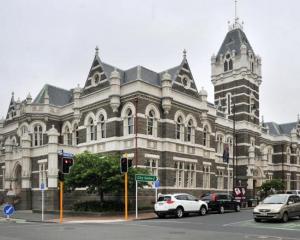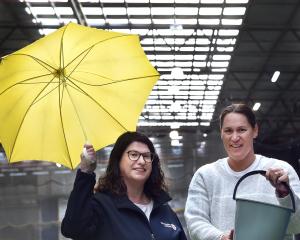Kees Meeuws has no plans to stop getting ta moko.
''I have a lot of skin to cover.''
The former All Black had his first ta moko - permanent body or face markings by Maori - when he was 17.
''For me, ta moko has been a journey when there has been something big in my life ... a birth of a child, a death in the family, those things that are important.
''And I am reminded of those events every time I look in the mirror.''
He was a star attraction at Ahikomau o Ruaumoko: Unearthing your Blueprint, a symposium held at the Otago Polytechnic Sargood Centre yesterday.
Tauranga ta moko artist Stu McDonald quietly worked on the Dunedin man's left arm, in one of two live performances at the symposium.
Another live work at the symposium, organised by Justine Camp and attended by more than 70 people from throughout New Zealand, featured Christine Harvey using a traditional hand-tapping technique.
Mr Meeuws said before getting a ta moko he would talk to the artist about what he wanted it to represent and trusted the artist to interpret his meaning.
The only down side to ta moko was for those people who rushed into it and ''got it for the look and not for the meaning''.
''Don't be in a rush because you have this for the rest of your life ... don't get something because it looks cool.''
He recalled only a handful of other prominent sportsmen having ta moko during his rugby playing career, ''but there has been a big resurgence''.
''People want to tell their life story and what better way than the art of ta moko.''
He played alongside rugby players in France who sported Maori-inspired tattoos and he encouraged them ''to get it done properly and get it done by a proper Maori artist''.
Mr McDonald, of Moana Moko, said there was big demand for ta moko overseas ''because we have such a steeped history with our rich tattoo culture''.
Many of the first European whalers and sealers to New Zealand got ta moko and that continual interest was still evident in the popularity of Maori designs in overseas tattoo parlours.
''That motivated us to go overseas so people could get this done properly.''
Mr McDonald said he loved seeing his artwork on people.
''I would be lying if I didn't say that was half the buzz for me.''
Yesterday's work took several hours and even the sound of Mr Meeuws' snoring did not bother him.
''I actually find it quite comforting,'' Mr McDonald said.
Prof Khyla Russell, of Otago Polytechnic, who received her ta moko in 2001, still gets asked ''How long does it take to put that on each day?''.
She said the symposium helped to educate people on the art form, which was once made illegal under the 1908 Tohunga Suppression Act.
Advertisement












